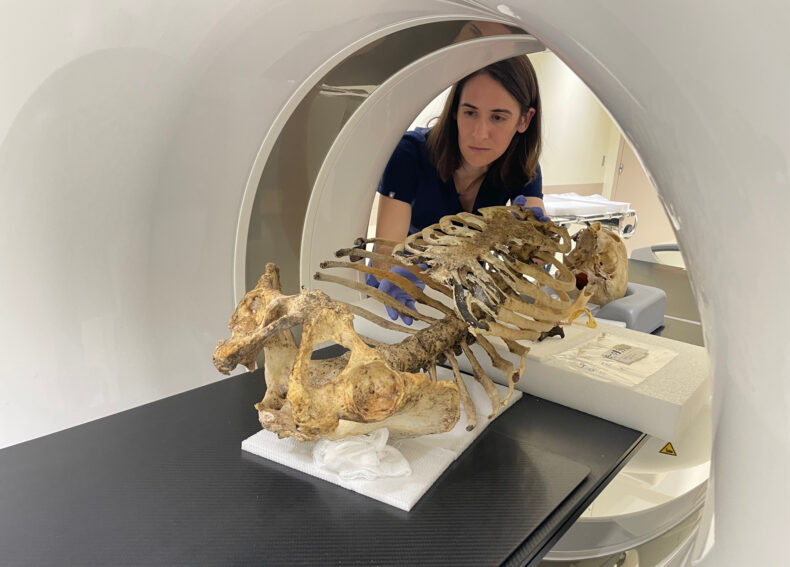Despite its solid appearance, bone is a dynamic tissue in which new bone is being formed and old bone is being removed. A disruption of this balance — in diseases including osteogenesis imperfecta, hyperthyroidism and osteoporosis — leads to reduced bone strength and increased risk of bone fractures.
Age-related osteoporosis affects about 10 million people in the United States and is responsible for about 2 million broken bones and $19 billion in related health care costs each year, according to the Bone Health & Osteoporosis Foundation.
To identify novel biological mechanisms that could point to new treatments for osteoporosis, Elizabeth Rendina-Ruedy, PhD, assistant professor of Medicine, and colleagues are studying how normal aging affects bone metabolic pathways in mice.
The investigators compared young (2 months) mice in the active phase of skeletal acquisition to old (22 months) mice using in vivo examination of bone microarchitecture and in vitro studies of bone-forming osteoblasts from the mice.
They found dramatic loss of trabecular bone (one of two bone compartments) in old mice and vastly different metabolic profiles in young versus aged osteoblasts. Osteoblasts from old mice had mitochondrial dysfunction, a lack of flexibility to use alternate nutrients and an accumulation of lipid droplets. The cells also had increased expression of oxidative stress genes and reduced expression of typical osteoblast genes compared to cells from young mice.
The findings, reported in the journal Aging and Disease, suggest that aging alters osteoblast metabolism and could contribute to age-related osteoporosis, and they support further studies to identify pathways that could be targeted to protect and improve bone health.
Co-authors of the study include Ananya Nandy, PhD, Alison Richards, Santosh Thapa, PhD, Alena Akhmetshina and Nikita Narayani. The research was supported by the National Institutes of Health (grants AR072123, AG069795).

















